This 1975 Laverda Jota 1000 road test is undertaken on a machine that we did an enormous amount of work on, as featured in this article. They come with their issues that need resolving, unless the work has been done by the right organisation. This is also true of many classic motorcycles of this age and era, which is why when we sell you a classic motorcycle it comes with a guarantee that all the work has been done. Introduced in late 1975, the Jota was basically a 3C with high compression racing pistons, race camshafts, giant carbs and the UK one with a slightly different exhaust. At the time of its arrival, the Jota was the fastest production motorcycle in the world which is part of the issues around these magnificent motorcycles.
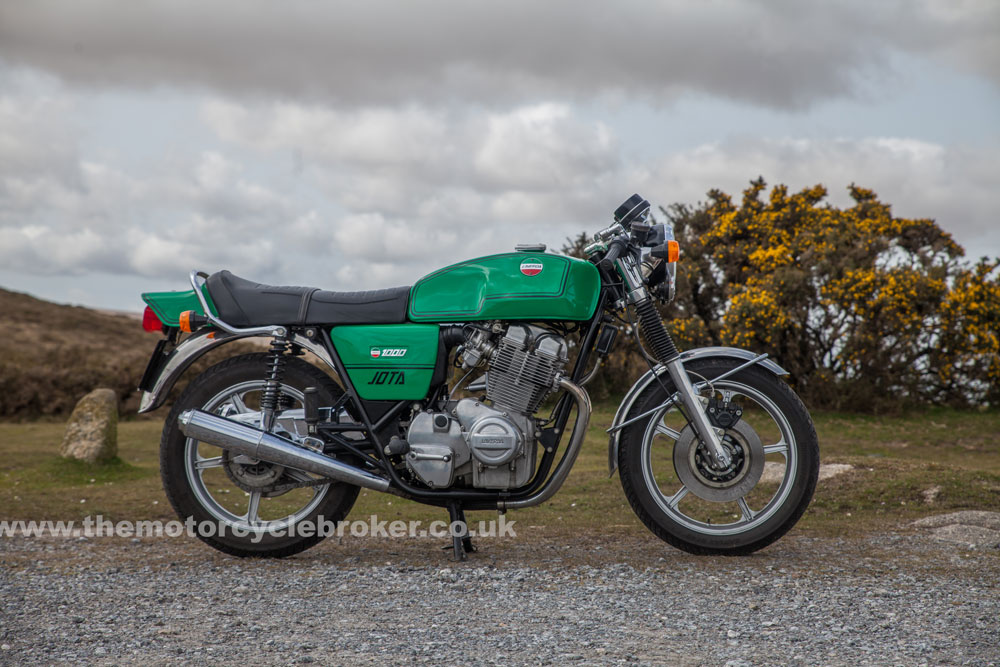
Background
The life span of such a motorcycle as the Jota, especially in the UK, was that once it was five years old it had very little residual value. Numerous go faster lunatics bought them up because they were relatively fast motorcycles still. These second and third owners had very little money, that they wanted to spend on maintenance, and a desire to thrash large motorcycles within an inch of their lives. They weren’t mechanically sympathetic and didn’t want to spend out on expensive servicing so the bikes very often weren’t maintained. Quite often, even worse than not maintaining them, they maintained them themselves. This doesn’t just apply to Jotas, it applies to so many motorcycles of this era and age. The Jota comes with some “idiosyncrasies” from the factory that need resolving to improve them. The first thing to do with any Jota is to ensure that all of the work has been done by the few trustworthy enough to do the work properly.
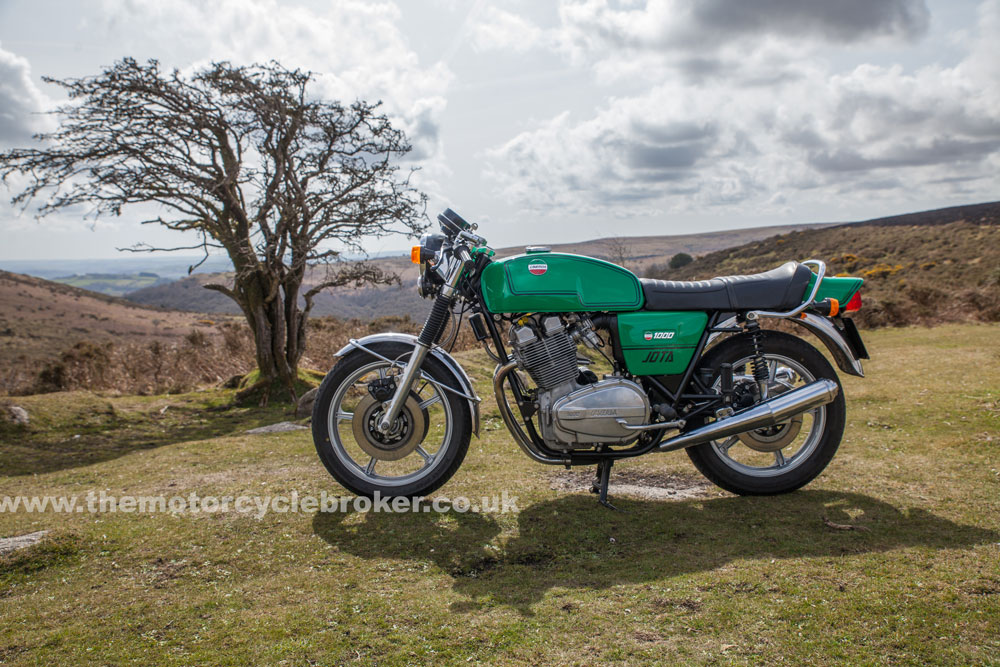
What is a Laverda Jota really like to ride?
What is a Laverda jota really like to ride? The answer to this is not straight forward, but overall this bike really does have a charm and charisma unlike any other motorcycle. The first thing you’ll notice is the stretch to the bars, as it’s a very long motorcycle. When it starts up the roar from the exhausts with minimal baffles is really unique and….lumpety. This is the early 180 degree crank model so one cylinder fires and then the crank rotates 180 degrees and two cylinders fire which makes the bike…lumpety. It’s also a three cylinder engine and not a four, so it doesn’t have that smoothness and it shouldn’t. Once off its stand it’s clear that it carries a lot of weight and much of that weight feels like it’s carried very high up. Jotas vibrate, especially the early 180 degree crank models, but once set up properly that vibration isn’t disconcerting. Like any motorcycle, it’s important to get some heat into the motor without giving it loads of throttle, yet it doesn’t want to labour around at all as it’s a racing motor. Even when running them in, they can rapidly get to 4,000 RPM without causing any problems. As the new bores, pistons and rings start to bed in, after the first hundred miles, 5,000 can be reached incrementally once the motor is hot. This motorcycle, once set up correctly will pull cleanly from low revs, but it doesn’t like being ridden at much below 60 MPH. Once it hits 60, everything makes sense and feels really good. I did own a Jota in 1990 when I lived in London and it was not the right home for this type of motorcycle at all, it hated the environment like a shark would hate living in a high rise flat out of water. The clutches are notoriously heavy and really do live up to their reputation. There are various conversion kits available to lighten the clutch, but I think it’s better to just develop a left wrist like a left handed fifteen-year old boy.
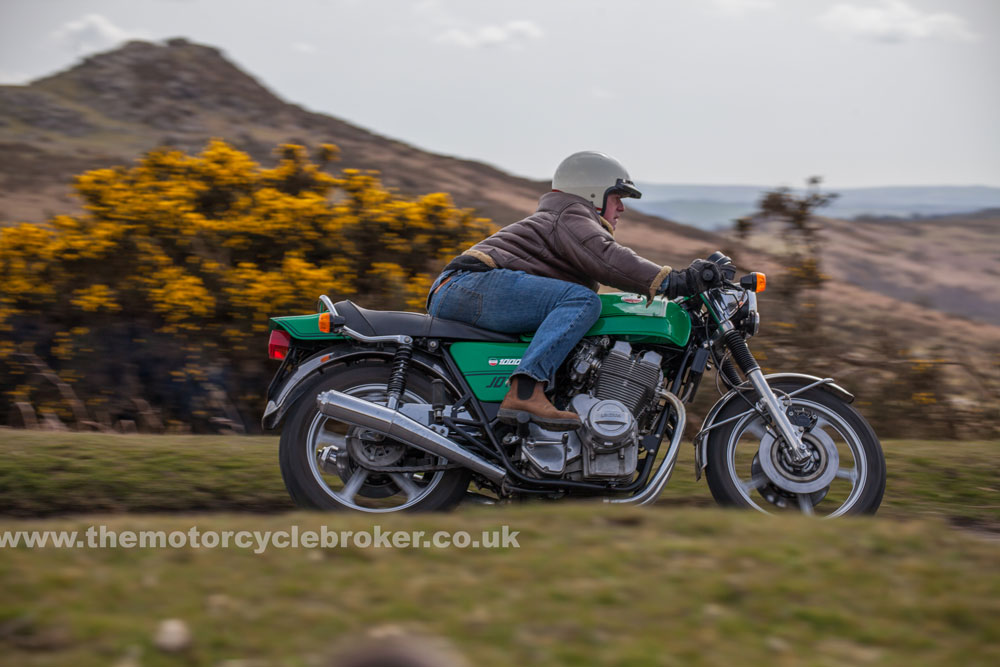
Agricultural
Although it was the fastest motorcycle in the world, the Laverda Jota is agricultural. It’s not really surprising, as they made tractors and combine harvesters as their primary business, as well as casting wheels for the RAF. The gear box is seriously clunky and if you’re not decidedly assertive with your foot, it’ll deliver you a false neutral or three. Once in a false neutral, you have to let the revs calm before trying again to engage the desired gear or you’ll just get graunching gears. As you get used to the Jota you realise that you don’t drop your shoulder into a corner, you drop your entire body into it. Keep the throttle on into the corners and then power out and make sure you have plenty of corner speed and the bike will reward you handsomely. It becomes a joy to ride, once you’re used to it, if you take it by the scruff of the neck. The engine is not happy at much below 3,000 RPM when on the move, it runs cleanly enough but it just wants to get on cam and go. If you sit watching your Jota tick over for hours on end, delighting at the symphony of this delightful triple, you’ll glaze the bores. If you ride it tamely below 3,000 RPM, holding it at a constant speed for long periods, again, you’ll glaze the bores and ruin a beautiful motorcycle. This motorcycle is very agricultural if you try to ride it gently, but get on the gas and its iconic reputation makes perfect sense in an intangible way. This is a motorcycle with charm and charisma.
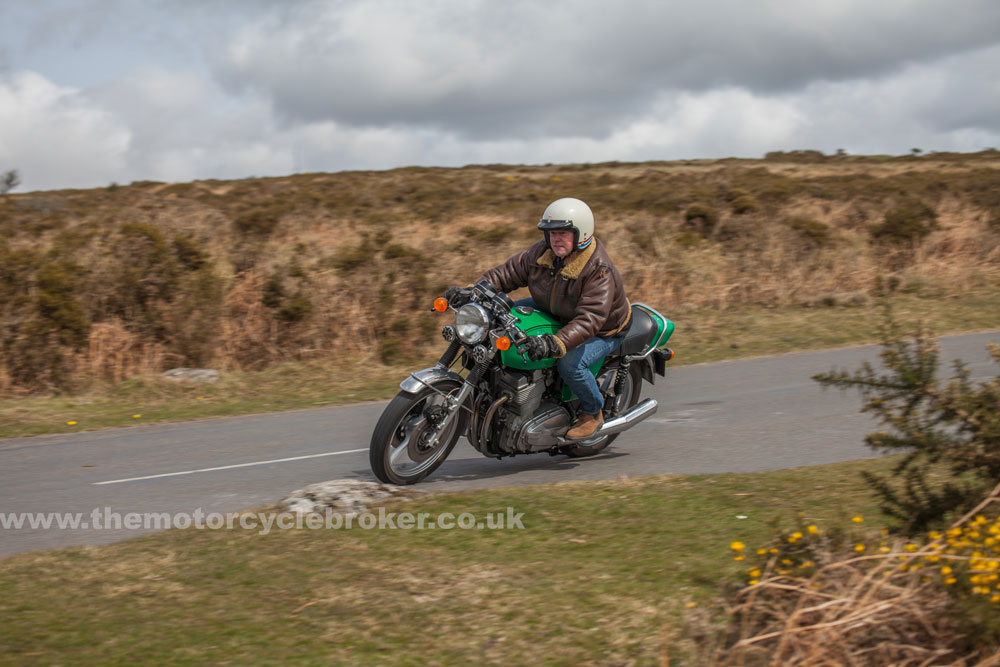
Laverda Jota is power hungry
The Laverda Jota is power hungry, it doesn’t dawdle and it doesn’t do dosey commutes and short journeys. It has three 32mm Dellorto carbs with accelerator pumps and a small airbox, so the motor is over-carbed for road use. It has lumpy 4C race cams, high compression piston and quite a free-flowing exhaust system. This adds up to a motor that begs to be ridden hard under load; the Laverda Jota is power hungry. The chassis is over rated with racers chopping out the top tube, back in the day, and replacing it with a scaffold pole. It carries its weight high up and feels like it needs wrestling around corners if you ride it tamely. This is not a motorcycle for a bimble, it’s a pure-bred stallion that craves riding hard. The chassis makes it hard work and disconcerting to ride if you want a calm ride at low revs in top, as the Laverda Jota is power hungry and has plenty once those throttles open up. Go into corners with some throttle and the motor pulling and once you’re over the apex, open those carbs up and the Jota will delight you. As you open the throttle, you’ll hear that motor deliver a mechanical symphony like no other motorcycle on earth. The Laverda Jota is a classic motorcycle with charm and charisma, unlike any other.
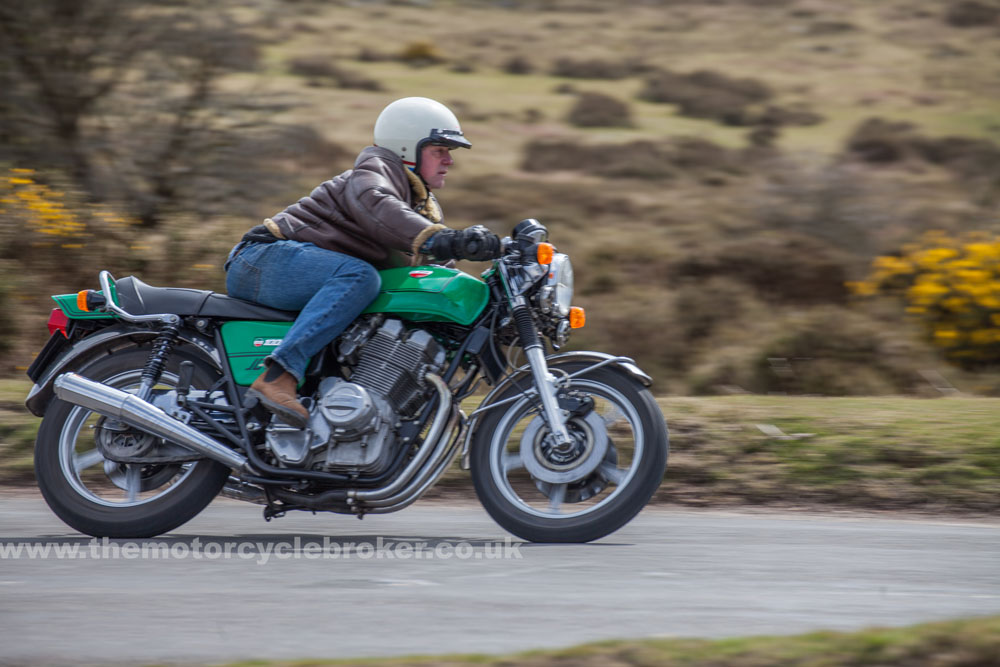
Laverda Jota has charm and charisma
The Laverda Jota has charm and charisma once you understand it and ride it hard. If you want to ride it like a Harley, save your money and buy something else, or you’ll hate it. It’s a classic motorcycle that requires enormous input from the rider, along with commitment and a need to go as fast as possible. It is essentially a racing motorcycle from the 1970s with lights for road use. Once you are dialled into the motorcycle it will deliver huge rewards, but get to know it properly. Once you do know the motorcycle and respect it rather than fear it, it will surprise you with the most beautiful serendipity. I took one of my favourite S bends, two up, and caught the switch in direction just sweetly. This motorcycle flipped from a hard left to a hard-right stance like a 250cc two stroke and I don’t know quite how such a big, heavy motorcycle achieved this. I’ve done it twice on two different S bends, which proved to me how the Laverda Jota has charm and charisma. The key was to head into the corners with some throttle, drop my entire body over to the left, open the throttle early on the apex and throw my body hard over to the other side of the motorcycle. Before my excessive weight had fully dropped on the right side of the bike it was heading in the opposite direction to take the right hand of the S bend perfectly as I went onto full throttle to get the bike upright again. Riding this motorcycle hard at over 60 MPH will make you grin and prove to you how the Laverda Jota has charm and charisma.
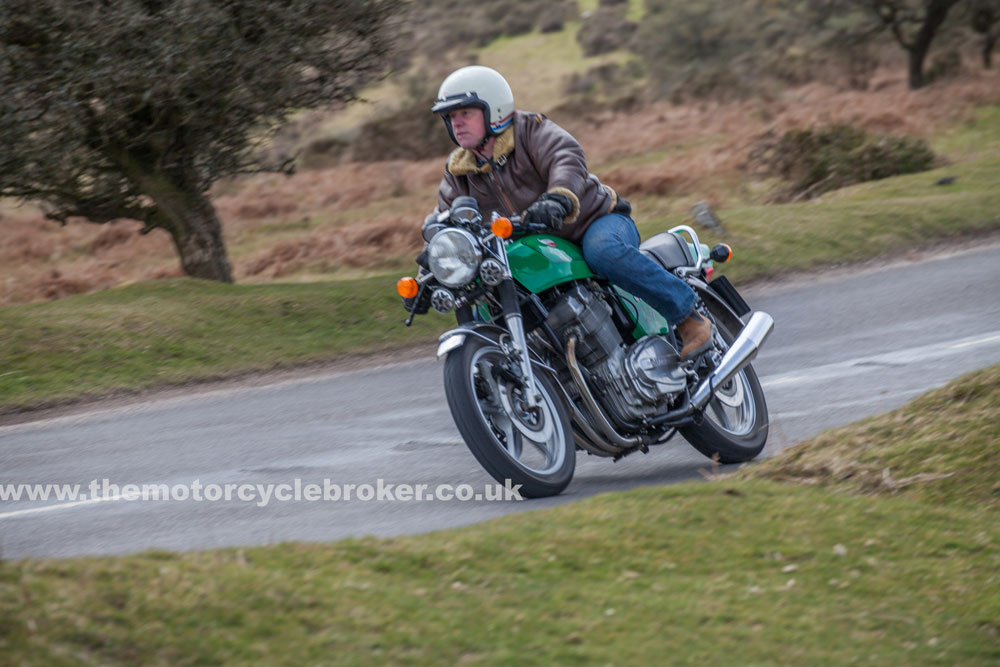
Laverda Jota is a great investment
The Laverda Jota is a great investment as well as a great to own and ride. Although I have already written about how perilous they are to acquire, which applies to numerous classic motorcycles of this age, the Laverda Jota is a great investment. This is why the Laverda Jota will deliver great profits, although these machines do come with factory fitted issues which need resolving. All classic motorcycles come with their hidden problems, which if you’re an Inside Line member you’ll know about from my newsletters. The same is true of classic cars, as any experienced collector will testify to. There will be age related problems with all machines, factory fitted flaws and, worst of all, the atrocious work carried out by either ham fisted owners or ham fisted workshops instructed to fix the motorcycle on the cheap. Investors seem to only want UK spec Laverda Jotas which also adds to the problems, as described in this article I wrote way back in 2014. Either we will have to buy UK motorcycles requiring masses of work, or pay a huge amount to import one from Europe. All of these machines require full investigation, irrespective of the invoices from “experts” (Laverda Scozia being the exception to this as their work is completely trustworthy), as we have witnessed the most atrocious work on these machines from UK workshops. This may not be the workshop’s fault, as they were probably told to botch the bike as cheaply as possible. Buying a decent Jota to start with is difficult enough, but getting the work done correctly can easily double the cost of acquiring a decent example of the motorcycle. These machines are now less than half of their true value, at the very least. The cost of working on these motorcycles and the cost of decent parts, is very high and is only going to increase substantially. Now is the time to find one and now is the time to do the work. These will have to double or triple in price to make sense. Classic motorcycles are, at present, at about 3% of the equivalent classic car value and this will not continue for much longer. They will end up being 30-60% of the equivalent classic car in the fullness of time. The Laverda Jota is a great investment and now is the time to buy one. If you want an investment grade Laverda Jota, call The Motorcycle Broker. We hope you have enjoyed this 1975 Laverda Jota road test.
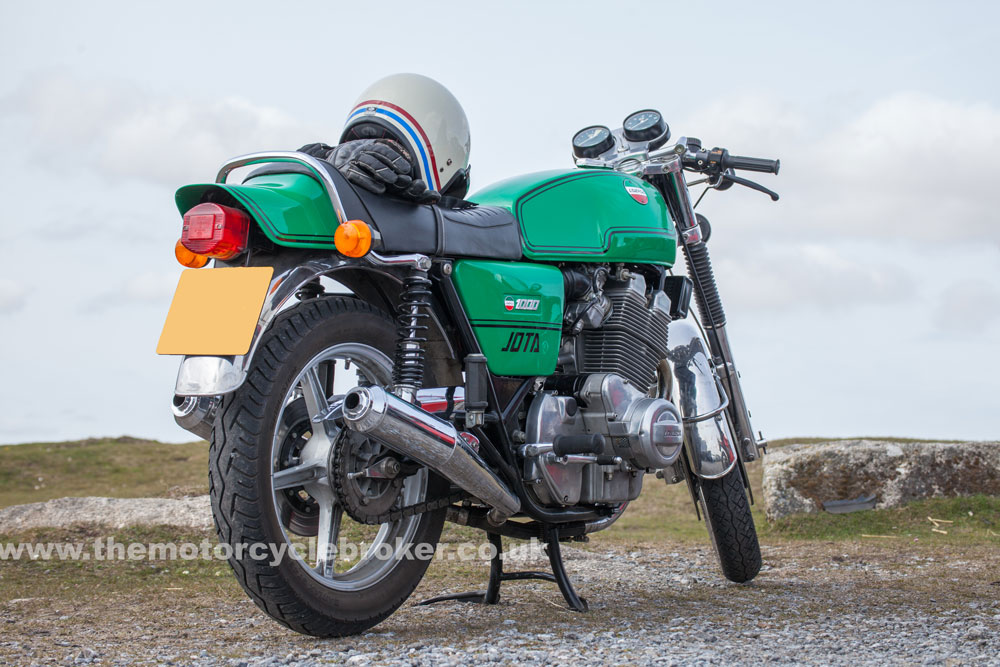
- Most collectible Ducati 916 SP - June 20, 2024
- Classic Motorcycles: To ride or not to ride? - June 17, 2024
- Classic Motorcycles: To ride or not to ride? - June 17, 2024








Leave a Reply